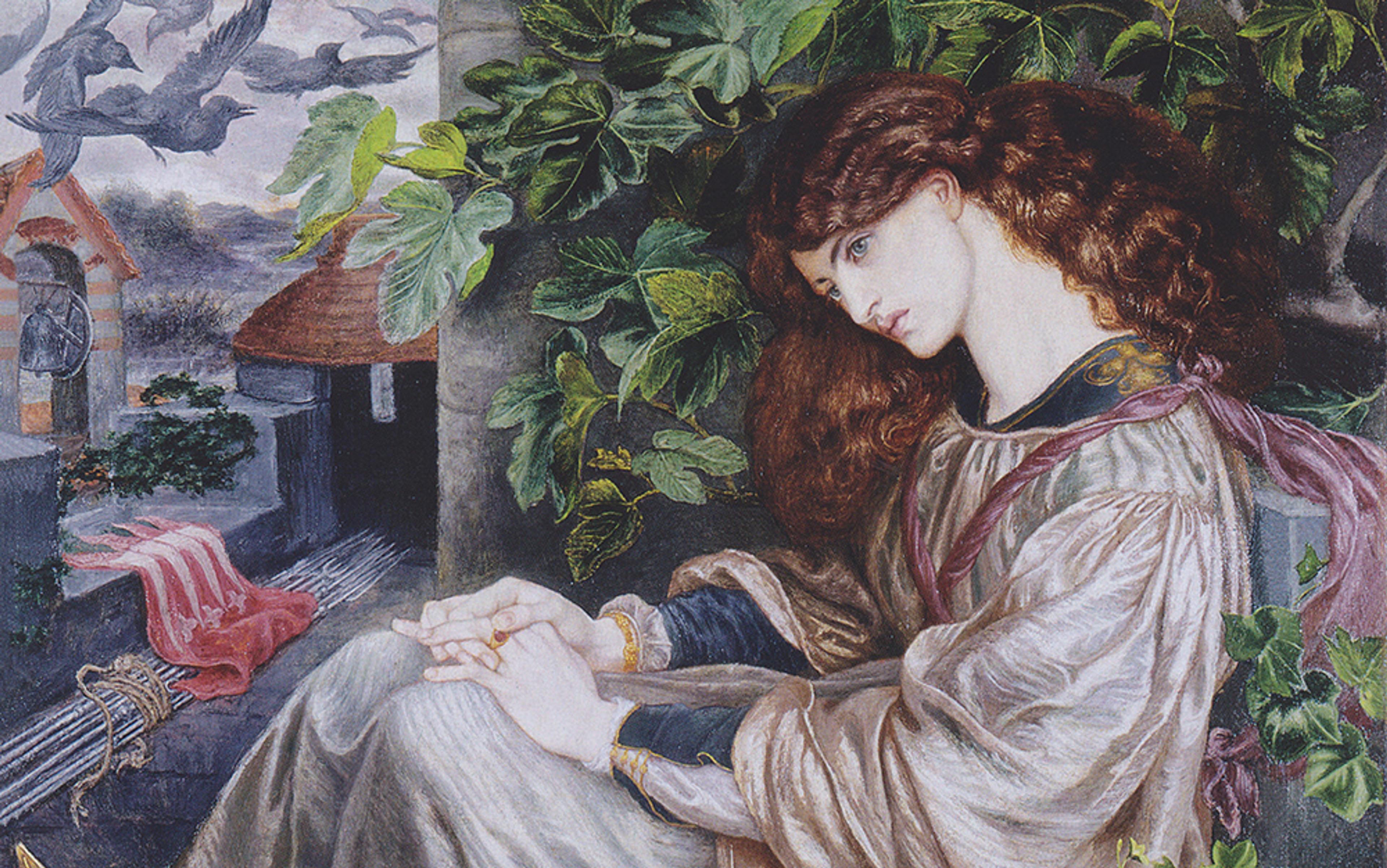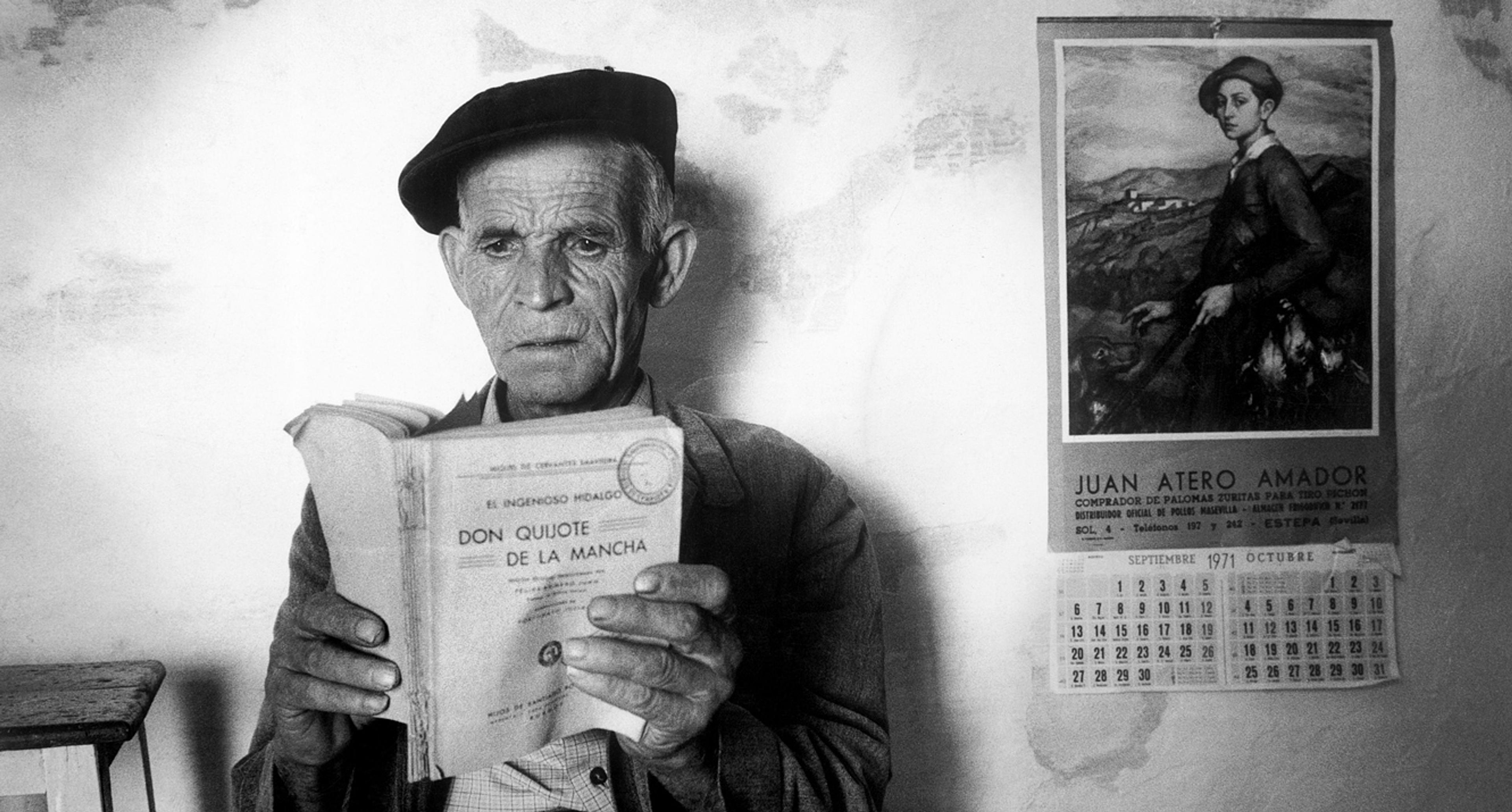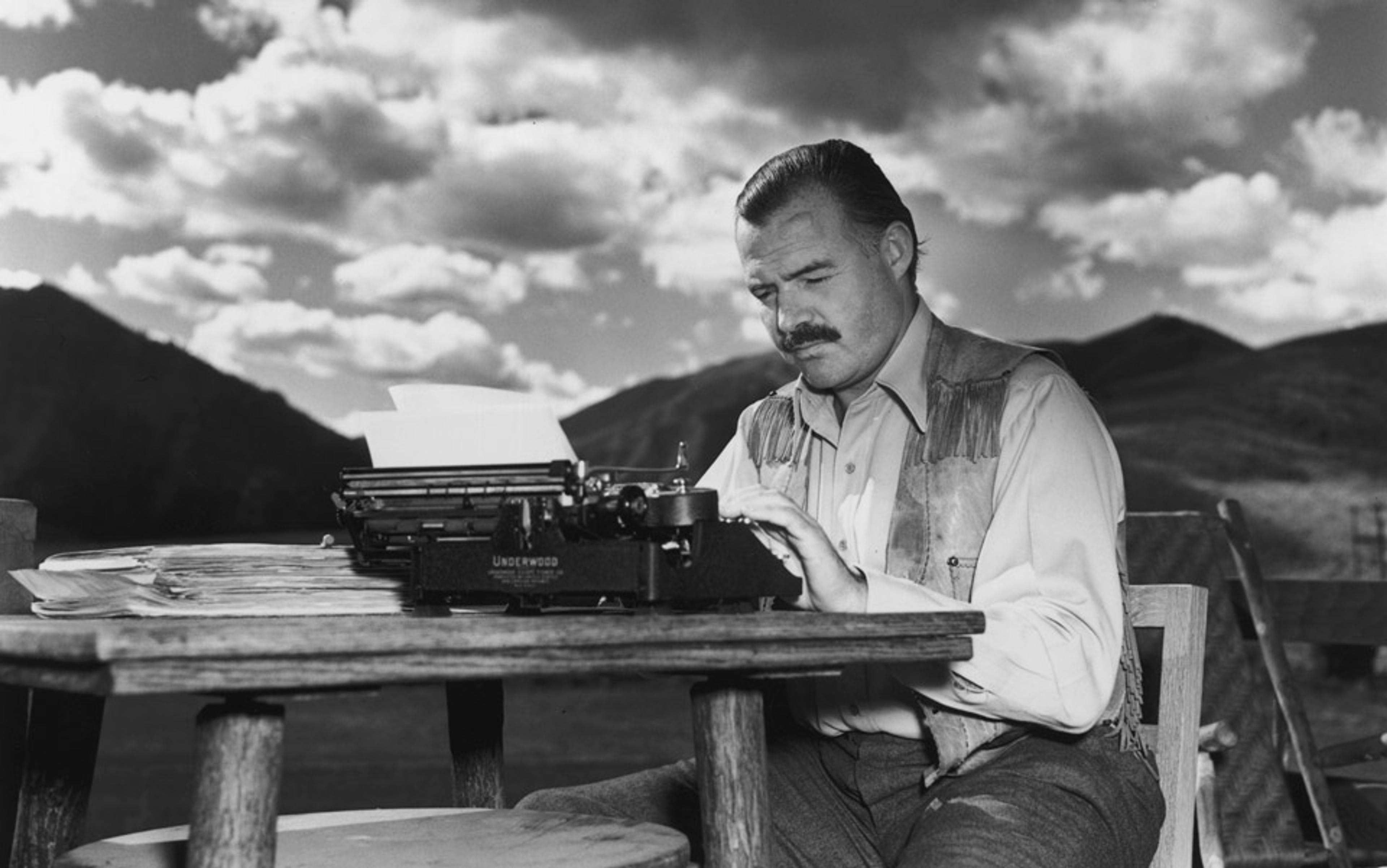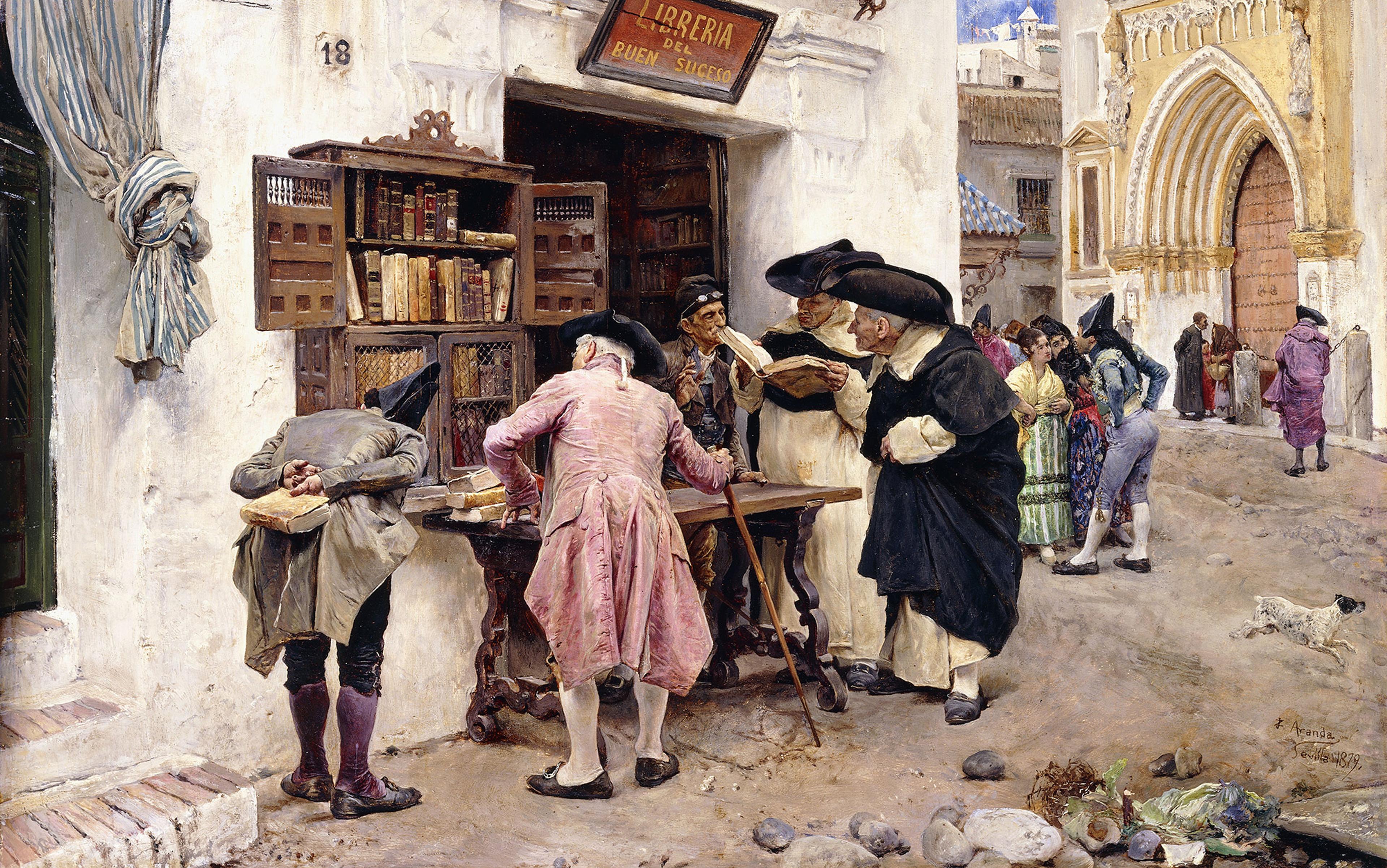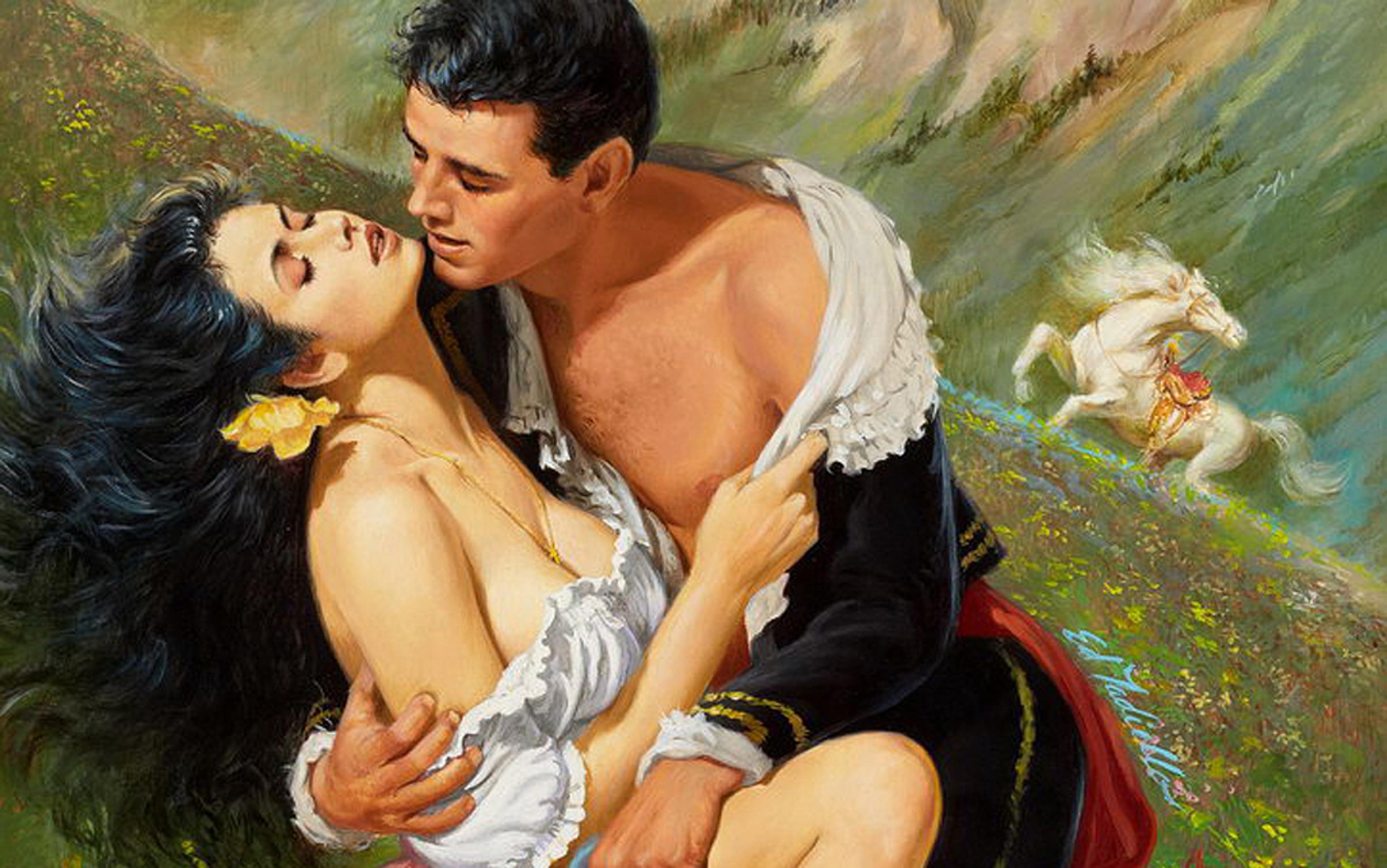Reading novels is good for you. This is the current wisdom, at least. A 2013 study by the New School for Social Research in New York City attempted to prove that reading passages by Don DeLillo and Lydia Davis had an immediate impact on participants’ ability to identify the emotions of others. Another, at Emory University in Georgia, found that reading novels had the potential to cause heightened ‘connectivity’ in the brain. A third, at the University of Sussex, made the case for books being one of life’s most effective stress-relievers.
While we might point to violent video games or sexually explicit films as potentially dangerous and corrupting influences on tender or vulnerable minds, the novel is treated as uplifting and salutary, regardless of its content: a kale smoothie for the soul. When we do talk about books being ‘dangerous’, it is usually with a knowing nod and a wink: and the implication is that those of us in the know know better. In a recent Guardian interview, the controversial British writer Melvin Burgess insists that ‘like most “dangerous” books, [Junk, his novel for young adults] is in fact a threat only to people who are themselves dangerous – people who want to control others’. Any suggestion that a book might be dangerous is, in other words, only ever a manifestation of bigotry or fear.
But it was not always thus. Throughout the 19th century, novels were regarded with the same suspicion with which we treat, say, Eli Roth’s ‘torture-porn’ Saw movies today. They were dangerous not simply because of the stories they might contain – the romantic expressions of wish-fulfillment, for example, that led Emma Bovary down the garden path of adultery – but also because reading itself was seen as a kind of possession: an encroachment of the ‘other’ upon the self.
In his condemnatory tract Popular Amusements (1869), the American clergyman Jonathan Townley Crane cautioned his flock against reading novels: ‘novel-readers spend many a precious hour in dreaming out clumsy little romances of their own, in which they themselves are the beautiful ladies and the gallant gentlemen who achieve impossibilities…’ only to find themselves ‘merged in the hero of the story’, losing the sense of who they really are.
Such a view might seem outdated now that we’re far more likely to talk about the health benefits of reading than its moral dangers. But in treating novels as the ultimate nutrition for the brain, do we risk neutralising their potency? After all, religious moralists such as Crane were not the only people to explore the dangers of novel-reading and the treacherous dynamics of story-telling: novelists and writers themselves drew attention to and critiqued the writer’s singular power over his readers.
Many of these authors – the philosopher Søren Kierkegaard in Denmark, the Decadent novelists Julés-Amedée Barbey D’Aurevilly and Octave Mirbeau in France, or Oscar Wilde in England – were responding to a wider intellectual trend in the 19th century: the configuring of the artist as a kind of replacement Creator-deity in an age turning away from traditional authoritarian conceptions of God; a quasi-divine artist whose words, according to the Romantic poet Samuel Taylor Coleridge, were ‘a repetition in the finite mind of the eternal act of creation in the infinite I AM’. Writer-philosophers such as Johann Gottlieb Fichte and Friedrich Schlegel drew on the philosophy of Immanuel Kant to celebrate the power of the human mind to impose order and form on the chaos of the world, and envisioned the artist or storyteller figure as a kind of über-Mensch, or superman, who could wield the organising power of narrative to lend form to the void.
But godlike power (as plenty of Romantic writers came to discover) has a dark side. And in the works of some of the greatest and most disturbing writers of the 19th century, we get a glimpse of what that dark side looks like: something at once more profound – and more diabolical – than Crane could have imagined.
‘The ironist is the vampire who has sucked the blood of the lover and while doing so has fanned him cool, lulled him to sleep, and tormented him with troubled dreams.’ Thus does Kierkegaard describe, in 1841, the ultimate artist, who takes a vital life-force from his spectator and then infuses – one might even say inseminates – him with poison. And throughout the 19th century, the storyteller was very often treated – literally or figuratively – as a vampiric figure: someone who infects a person’s sense of self and drains his life force by means of corroding influence.
Just look at the protagonist in Wilde’s novel The Picture of Dorian Gray (1890), influenced both by the rakish, ironic epigram-artist Lord Henry Wotton, and by the ‘little yellow book’ that Henry gives him – meant to be J K Huysmans’ Against Nature – which spurs him into a life of decadent sensuality:
It was the strangest book [Dorian] had ever read. It seemed to him that in exquisite raiment, and to the delicate sound of flutes, the sins of the world were passing in dumb show before him… It was a poisonous book… The mere cadence of the sentences… produced in the mind of the lad, as he passed from chapter to chapter… a malady of dreaming, that made him unconscious of the falling day and creeping shadows.
The influence of the ‘yellow book’ is an intensification of Henry’s own: the moment of reading serves as an implied homoerotic seduction. Dorian temporarily loses his ability to engage with the outside world. He starts to experience hallucinations; his knowledge of vice is expanded, his self-enclosure breaks open. Dorian is the ultimate vampire’s victim: transformed by this semi-erotic encounter into a dark mirror of the influencer himself (in this case, Lord Henry, transposed onto the unnamed figure of Huysmans).
And the encounter between the storyteller/story and his listener is so often – like most vampiric encounters – erotic. In D’Aurevilly’s short story The Greatest Love of Don Juan (1867), a Count – regaling a dinner-party of his ex-lovers – provokes an erotic response in his listeners ‘well aware how much [narrative] procrastination adds to the keenness of desire’ of his greatest conquest, in which he managed to convince a virgin that he’d impregnated her just by looking at her.
He convinces her she is willing to break apart bourgeois notions of sexual propriety, then uses that narrative to achieve his goals
Here, the storyteller is seducer on two accounts: he tells a salacious story to the women at his table, but also, implicitly, he relates a more sickening narrative of conquest, taking hold of the virgin so completely that her very body alters to fit the narrative with which he has figuratively raped her.
This motif of the diabolical storyteller, and the ‘listener’ whose selfhood is sacrificed to the storyteller’s desire for self-expansion, is repeated over and again in late-19th-century literature. In Kierkegaard’s story The Seducer’s Diary (1843), the titular ‘seducer’ Johannes falls in love with young Cordelia, wanting not merely to possess her physically but to ‘poeticise’ himself inside her: to make her into his artistic creation. He manipulates her into an engagement, then tricks her into breaking it off so that she can sleep with him unencumbered by conventional morality. To achieve this, Johannes essentially tells Cordelia a story about herself: using his narrative power he makes her see herself and their love in terms of myth and story – thereby making her ‘lose sight of everything [he doesn’t] want her to see’. He convinces her she is a modern woman, willing to break apart bourgeois notions of sexual propriety, then uses that narrative to achieve his goals: sex and, more powerfully, control.
As in D’Aurevilly’s Don Juan, Johannes’ words serve as literary insemination, replacing Cordelia’s idea of herself with the seducer’s:
Maybe you are not a real fisher-girl but an enchanted princess… if you are a real fisher-girl, you should go down… with your firewood, past me as I stand on the other side of the road.
Reading Johannes’s letters, Cordelia – like the readers of novels that Crane describes – loses her identity outside his narrative sphere.
But novels are vampiric in another way, too. In letting ourselves be possessed by narrative, we – like Dorian, like Cordelia – are compelled to be complicit, reforming ourselves into aesthetic vampires, and allowing ourselves to be reborn in the image and likeness of the violence we find we now crave.
Perhaps no novelist has explored this dynamic as graphically as Mirbeau, whose novel The Torture Garden (1899) might be considered a textual prototype of the Saw films. This is a story of a young man who finds himself in a Chinese ‘pleasure-garden’ of increasingly elaborate – and lovingly described – atrocities perpetrated against the human body. At its core, it is a critique of how easy it is to aestheticise the truly terrible. The frame of the story is, like D’Aurevilly’s, a dinner party at which verbally dexterous aesthetes try to one-up each other with the stories they tell. This story, with all its graphic gore, is the implicit winner. Mirbeau’s language is gem-like; so beautiful that we almost forget the reality of what we see:
On the shafts of these torture-columns – a diabolic refinement – pubescent calystegia, ipomoea from Daoura, lophospermum and colocynth spread their blossoms… Birds piped their love-songs there. At the foot of one of these gibbets, covered with flowers like the columns of a terrace, an executioner was seated… cleaning his fine steel implements with silk cloths; his gown was all covered with spattered blood… But in this haven of flowers and perfumes, this was neither repugnant nor terrible – it seemed that petals from a neighbouring quince tree had rained upon his robe.
Intoxicated by the petals, the blossoms, the lapidary language, we – like the storyteller’s dinner-party listeners – forget the sickening implications of what we see. The storytelling dynamic not only de-sensitises us to violence, it makes us crave narrative fulfilment – the ecstatic consummation of our dread as the torturer raises his knife. Mirbeau’s story reveals the flip side of the novel’s danger: not only can the novel break apart who we are, but it can also remake us. It can reinforce and reinscribe our own most noxious desires, making us crave the release that comes from our worst expectations being fulfilled.
Today, the figure of the erotic vampire is so ubiquitous as to be almost cliché. The horror of Dracula has long since given way to the neutered violence of the Twilight saga’s sparkly Cullens. The idea that another might encroach upon our self-understanding, and shape us in his own image, becomes – in Twilight and its ilk – a kind of anodyne wish-fulfilment, and the dangerous act of reading is treated with a similar disregard. Being taken over by another – as Twilight’s creator Stephanie Meyer and the Emory studies both suggest – is just a more expedient path to a better you.
But the lessons of Wilde, Mirbeau and their ilk can help us understand how the act of storytelling is, necessarily, an exertion of power – of the voiced over the voiceless – that we can view through a political lens. We can see this already in the earlier 19th-century examples, which are – with the rule-proving case of the ‘feminised’ Dorian Gray – constructed along gender lines. Men tell stories about themselves; women are formed by the stories men tell about them. Men create themselves; women are creations.
More than a century after Kierkegaard, feminist critics have argued that our understanding of narrative conventions are governed by vectors of sexual inequality. And by the predominant understanding of the linguistic, narrative act as male, even as the un-narrativised world is always female: just look at Genesis, where God’s speech colonises the feminised waters of the void.
The American literary critic Nancy Miller points out that the very way we judge the events of novelistic narrative as plausible or implausible is rooted in social codes (and patriarchal expectation). When it comes to identifying with a character and understanding her behaviour, ‘verisimilitude’ measures conformity to a social ideal. Novels, Miller says, do ‘not imitate life but reinscribe received ideas about the representation of life in art. To depart from the limits of common sense… is to risk exclusion from the canon.’
The same dynamic that made us hunger for more death and destruction in The Torture Garden can be dangerous in another way. It makes us hunger for a consummation not just of the horrific but of the banal: our unconscious expectations of the social order restored. In Gustave Flaubert’s Madame Bovary (1856), it might be the punishment of an adulteress; in E L James’s Fifty Shades of Grey (2011) – to give a recent but telling example of a book that has inspired fierce loyalty on the part of its readers – it is the characters’ return to hetero-normativity, to ‘vanilla’ sex that codes the trilogy as having a ‘happy’ ending satisfactory to its audience.
And it’s not just toxic notions of gender that novels have the power to reinforce. Historically speaking, control of narrative and language has been inextricable from notions of political and cultural control. The power of the writer is to decide which characters, which worlds, he treats as fully human, and which as reducible and other.
‘Power is the ability not just to tell the story of another person, but to make it the definitive story of that person’
In a 2009 TEDx talk, writer Chimamanda Ngozi Adichie highlighted the dangers of the ‘one story’, explaining how she, as a Nigerian, found her self-understanding dominated by collective narratives – the ‘single story of Africa’ – in a manner not so different from Cordelia’s possession by Johannes. As a child, Adichie wrote exactly the kinds of stories she had access to:
All my characters were white and blue-eyed, they played in the snow, they ate apples, and they talked a lot about the weather, how lovely it was that the sun had come out… I had never been outside Nigeria. We didn’t have snow, we ate mangoes, and we never talked about the weather, because there was no need to.
To be a fully formed character, in the stories Adichie read, was to be white and British; the story of Africa, by contrast, was a story ‘of negatives, of difference, of darkness’.
Here, too, the act of reading is an act of experiencing another kind of danger: in this case, the danger to the self posed by writerly erasure. ‘Like our economic and political worlds,’ Adichie says, ‘stories too are defined by the principle of nkali: how they are told, who tells them, when they’re told, how many stories are told, are really dependent on power. Power is the ability not just to tell the story of another person, but to make it the definitive story of that person.’
These might not be the vampiric powers envisioned by 19th-century writers, but the dangers of narrative control are no less noxious for being political in nature. Storytelling is inextricable from power: the act of reading is, for better or worse, an act of submission to an external force granted the privilege of language, of narrative organising. At its best, reading novels might be as salutary as recent studies allege. But at worst, novels – in all their dangerousness – can erode at our sense of self: a woman who reads Samuel Richardson’s Clarissa (1748) could find herself accepting a world-narrative where rape is justifiable; a person of colour, growing up on Rudyard Kipling’s Kim (1901), might internalise as normative a world of white power, just as Dorian Gray, through reading Huysmans, normalises the debauchery that is to come.
Today, we experience a degree of Rev Crane’s moral panic over TV, video games, smartphones. We fear that playing Grand Theft Auto will incite us to violence, or that seeing Saw will alienate us from the sufferings of our fellow human beings. Yet we are all too blind to the dangers that narrative – embodied in text no less than in the plot of a video game – has the power to hold. We assume that all books, all stories, are ‘safe’, and in so doing we deny texts their power, to paraphrase T S Eliot, to murder and create.
At its most fundamental level, to read is to put our selves at risk, to make ourselves vulnerable by welcoming the presence of an other into our psychic space. This can be a radically transformative experience, challenging us to reformulate our own self-understanding. But at worst, we become like the dinner-party guests in The Torture Garden or Don Juan – our ‘possession’ by a storyteller awakening our inner violence. Or else we become like Johannes’ Cordelia, the books we read reinforcing existing societal threats to our being. Either way, the act of reading is an act of acceptance of power: a power that, if not god-like, is nevertheless – within the sphere of the text – absolute.
That doesn’t mean we should cast in our lot with Rev Crane and ban novels altogether. Rather, it means respecting that the power of the novel lies precisely in the potential it has to destroy us. And respecting that the act of narrative, for good or ill, does indeed – as the Romantics saw it – reflect the creating act of God.
With such power, the saying goes, comes responsibility. At least a generation of writers has been conscious of how that pattern might be subverted or reformed, used for good. A rich tradition of political response-literature, from the post-colonial and feminist traditions, has emerged in recent decades, in which literary classics are challenged or rewritten in rebellion against their purported textual authority. Jean Rhys’ Wide Sargasso Sea (1966) tells the story of Jane Eyre’s ‘madwoman in the attic’ – a Creole girl called Antoinette and forcibly renamed Bertha, in just one act of linguistic domination by her abusive husband (who, in Rhys’ text, is not named Rochester, nor indeed named at all).
In The Meursault Investigation (2013), the Algerian writer Kamel Daoud offered a post-colonial response to Albert Camus’ The Stranger (1942) – the story of an emotionally-stunted and alienated French Algerian who kills, seemingly without motive, a local unnamed Arab. In Daoud’s novel, the brother of that Arab – here given a name, Musa – retells Meursault’s story from his own perspective: ‘in the same language, but from right to left’, and in so doing destabilises Camus’ version. Daoud make us realise that narration, in what it leaves out, is always an act of violence.
Daoud’s and Rhys’ novels subvert novels as tools of oppression: they seek power for the powerless. But in using the novel form, they’re also acknowledging just how potent – for good or ill – such a tool can be. To acknowledge that textual narratives have as much capacity to be truly dangerous as they have to be truly illuminating is to acknowledge that books, like people, are not inherently moral or immoral. Only by respecting the potential of books to destroy us – terrifying as it might be – can we have an authentic faith in their ability to put us back together again.
